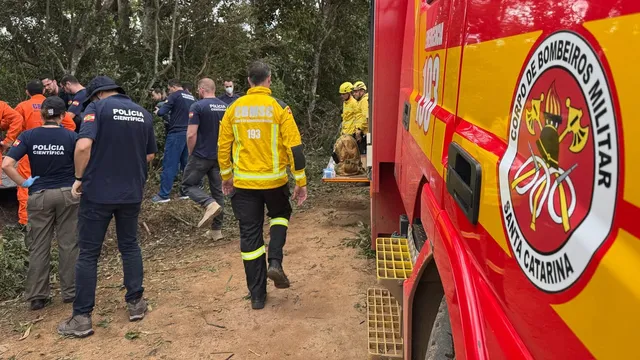
Tragedy strikes as eight die in hot air balloon fire in Brazil
2025-06-21 21:39- On Saturday morning, in Santa Catarina, Brazil, a hot-air balloon carrying 22 people caught fire and crashed.
- Eight people were confirmed dead, with 13 others, including the pilot, injured.
- Authorities have launched an investigation into the crash to ascertain its cause.
Express your sentiment!
Insights
On Saturday morning, a tragic incident occurred in Brazil's southern state of Santa Catarina when a hot-air balloon carrying 22 individuals caught fire and subsequently crashed. Local officials confirmed that eight people lost their lives in the accident, with four victims succumbing to injuries sustained while attempting to escape the burning basket, while another four died from the impact during the fall. Thirteen others, including the pilot, were injured in the incident and have been transported to local hospitals for treatment. Eyewitness accounts and footage from the scene depict rather harrowing imagery of the balloon engulfed in flames and descending rapidly towards the ground. The event took place near a health centre in a rural area, heightening the sense of tragedy surrounding the situation. Reports indicated that during the descent, at least one passenger attempted to escape from the fire by jumping out of the balloon, a desperate act that reflects the urgency of the circumstances. According to the pilot's statement to authorities, he was uncertain if the fire was an initial ignition or a rekindling of flames. He remarked, "I don’t know if it stayed lit or if it reignited on its own, but it was the torch that started it all." The investigation into the cause of the fire and the subsequent crash has been initiated by the local civil police. They are gathering information, including testimonies from survivors, to better understand what transpired. The city of Praia Grande expressed condolences to the families of those affected. Jorginho Mello, the governor of Santa Catarina, shared the news of the fatalities in a social media post, stating preliminary findings about the number of people onboard. This event is not isolated as hot-air balloon accidents can occur with various fatal outcomes; for instance, just a week prior, another hot-air balloon crash in central Turkey killed a pilot during a hard landing caused by sudden wind changes, showcasing the dangers associated with aerial activities. As investigations continue, authorities are committed to ensuring transparency and safety in future hot-air balloon flights, amidst growing concerns from the community about the tragedy.
Contexts
Hot air balloon safety regulations in Brazil are pivotal in ensuring the safety of passengers and crew while promoting the growth of this popular recreational activity. With the increasing number of hot air balloon events and the growing interest in tourism related to aerial activities, it is essential for regulatory bodies to establish comprehensive safety protocols. The Brazilian National Civil Aviation Agency (ANAC) is the primary authority overseeing these regulations, ensuring that they align with international standards while addressing specific national needs. Pilots and operators are required to hold valid licenses and adhere strictly to maintenance and operational guidelines as prescribed by ANAC. Proper training programs are also mandatory, which encompass both theoretical knowledge and practical experience in balloon piloting and emergency procedures. Inspection and maintenance of hot air balloons are crucial elements of safety. Regular checks must be conducted to verify the integrity of the fabric, the envelope, the burner system, and the basket. These inspections aim to identify any signs of wear or damage that could potentially compromise the balloon's performance. Additionally, operators must maintain a detailed log of all inspections, repairs, and maintenance activities, which not only aids in safety management but also serves as a legal record in case of incidents. In order to enhance regulatory compliance and reinforce a safety culture among operators, training workshops and safety seminars are often conducted, ensuring that all personnel stay updated on best practices and safety techniques. Weather conditions play a critical role in hot air ballooning safety, and operators must have a thorough understanding of meteorological factors that can influence balloon flights. Regulations require pilots to conduct pre-flight weather assessments and obtain the necessary permissions to ensure that conditions are suitable for flying. In situations where conditions are deemed unsafe, such as high winds or thunderstorms, flights must be postponed or canceled. This emphasis on weather safety not only protects passengers and crew but also minimizes risks to property and the surrounding environment. In conclusion, Brazil's hot air balloon safety regulations are essential for maintaining the safety of this exhilarating activity. The combination of stringent pilot training, regular inspections, and a keen awareness of weather conditions works to create a robust safety framework. The commitment of regulatory bodies like ANAC to enforce these standards demonstrates the importance placed on safety within the industry, fostering public trust and encouraging the growth of hot air balloon tourism in Brazil.